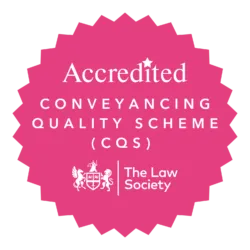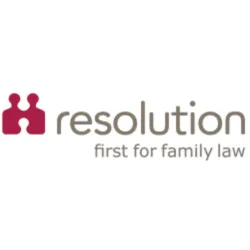
Shared Parental Leave
Shared Parental Leave
For babies born on or after 5 April 2015, eligible parents can choose how to share the care of their child in the first year after birth (or adoption).
The existing system (which remains valid for babies born up to 4 April 2015) allows parents to share leave to a certain extent, but the new system allows for a lot more flexibility, with parents potentially able to take leave at the same time and/or in blocks of one week at a time.
How does shared parental leave work?
The mother retains her normal maternity leave rights and Shared Parental Leave is optional. The mother who takes up the option can end her maternity leave early and take Shared Parental Leave with the father/her partner instead for the balance, provided they meet the qualifying requirements. They will also potentially be entitled to receive Shared Parental Pay.
The amount of leave available is calculated using the mother’s entitlement to maternity leave, which is up to 52 weeks’ leave. The mother must take two weeks’ compulsory maternity leave on the birth of the child, which means in practice the parents have up to 50 weeks’ leave that they can choose to share. The father is still entitled to 2 weeks’ paid paternity leave in addition to the Shared Parental Leave rights, but additional paternity leave is no longer available.
Once the mother has ‘curtailed’ her maternity entitlements (i.e. given advance notice to reduce her maternity entitlements) the remaining weeks of the maternity leave period can be taken as Shared Parental Leave. There is no requirement for the mother to have ended her maternity leave period before Shared Parental Leave can start, meaning it is possible for both parents to take leave at the same time, provided they both meet the eligibility requirements.
The flexible nature of Shared Parental Leave means that parents can share the caring responsibilities evenly or have one parent taking the main caring role, depending on their preferences. Unlike maternity leave, employees can stop and start their Shared Parental Leave and return to work between periods of leave, with each parent able to submit 3 notices to book periods of leave.
What are the requirements of shared parental leave?
There are qualifying requirements. For a parent to be eligible to take Shared Parental Leave they must be an employee and must pass the continuity of employment test, i.e. they must have worked for the same employer for at least 26 weeks at the end of the 15th week before the week in which the child is due. In addition, the other parent must meet the employment and earnings test, i.e. they must have worked (including self-employment) for at least 26 weeks in the 66 weeks leading up to the baby’s expected due date and earned an average of at least £30 a week in 13 of the 66 weeks.
This test in practice means that where both parents satisfy the continuity of employment test, they will both be able to make use of the pot of Shared Parental Leave. However, the nature of the tests means that a family can still use Shared Parental Leave even when only one parent meets the eligibility criteria. For example, if one parent is employed and meets the continuity of employment test, but the other parent is self-employed and would not be eligible to take leave him/herself, the employed parent could still be eligible to take Shared Parental Leave if the self-employed parent meets the employment and earnings test.
What is the payment for shared parental leave?
This could be of particular benefit to families where the mother is self-employed (and would not be eligible to take maternity leave) and the father is employed. Under the previous system, the father would only be entitled to take 2 weeks’ paternity leave, but the new system of Shared Parental Leave means that the father could be able to take off the full period of Shared Parental Leave (provided the self-employed mother has curtailed her right to maternity allowance).
It is also possible for eligible parents to qualify for Shared Parental Pay. Shared Parental Pay is paid at a statutory rate (£151.97 per week from 5 April 2017 or 90% of average weekly earnings if lower). Some employers may pay enhanced rates.
What is the shared parental leave process?
Several steps must be taken before Shared Parental Leave can be taken. There is detailed guidance to help parents seeking to take Shared Parental Leave and claim Shared Parental Pay. They should also consult any policies their employers might have.
Shared Parental Leave can only be taken:
- After the mother has already returned to work;
- Given notice to her employer to curtail her maternity leave; or
- Ended/given the notice to curtail her entitlement to maternity pay or allowance.
What is the shared parental leave notice?
The employee must then give their employer notice of entitlement to take Shared Parental Leave at least 8 weeks before they intend to take leave. The notice must include certain information and be accompanied by a declaration form. The notice must also be given to claim Shared Parental Pay.
An employee can submit three separate notices to book leave, provided they are submitted at least 8 weeks before the leave is intended to start.
Requests for continuous periods of leave must be accepted by the employer, but requests for discontinuous periods can be refused.
Employers can make enquiries about eligibility by asking for a copy of the child’s birth certificate and they also can request the contact details for the employee’s partner’s employer. Such requests must be complied with, within 14 days.
What do I need to do about shared parental leave?
Employees are advised to discuss their plans with their employers as soon as possible once they have decided they wish to take Shared Parental Leave., Inin particular, if they are considering requesting discontinuous periods of leave, to find out what arrangements the employer might agree to and what plans the employer will have to make to accommodate the leave.
Similar rights and entitlements to Shared Parental Leave/Pay also apply to parents adopting a child.
For more information on Shared Parental Leave, visit this website.
Self-employed Paternity Leave
Paternity Benefit
If you fall into any of the categories below, then you, unfortunately, DO NOT receive maternity pay:
- An agency worker
- Zero-hours contract worker
- Casual worker
- Freelancer
- Or a contractor
Unpaid parental leave can be taken when a child is born but there is no payment awarded.
Frequently asked paternity leave questions
How much notice should I give my employer for paternity leave?
It is required that you give your employer an 8-week notice from the point where the child is expected to be born.
How much paternity pay can I receive?
SPP (Statutory Paternity Pay) can be awarded to people who wish to take a leave from work to look after their new-born child. You can only have 2 weeks of paternity pay in either 2, 1-week blocks or 2 consecutive weeks. A £151.97 p/w payment (£302.40 total for 2-weeks) is awarded or 90% of the average weekly salary (whichever is cheaper).
Can I take paternity leave after shared parental leave?
No, you cannot take paternity leave after shared parental leave.
Morrish Solicitors specialise in employment law, we help Trade Unions, their members and Private Clients across the UK with their legal issues. If you have concerns regarding your shared parental leave please contact us on 033 3344 600 or email [email protected] with your request.










